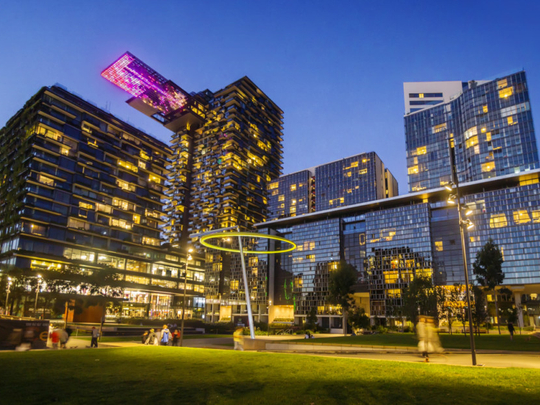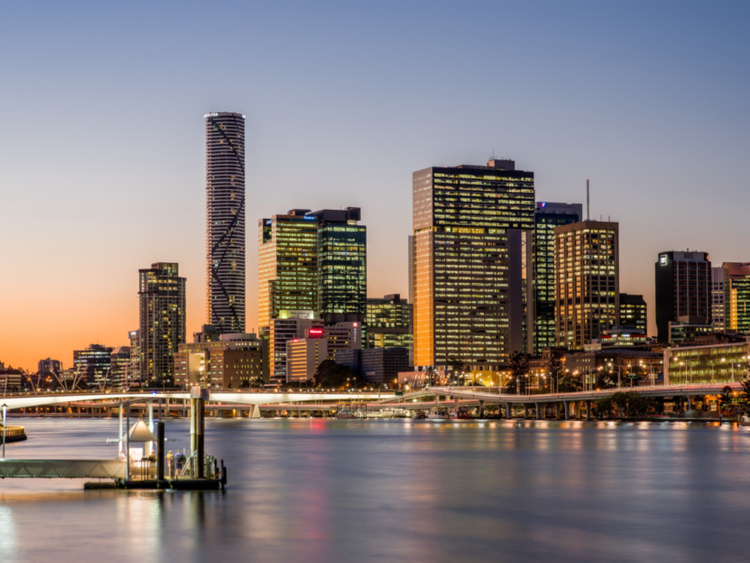
Over the past year, residential property prices have risen impressively in most Australian cities, although value increases lessened recently. Experts nonetheless advocate purchasing in prime areas, while upcoming developments are also worth considering.
Overall, average residential property prices increased by 10.7 per cent until September. In the preceding 12 months, prices rose in Sydney (19.9 per cent), Melbourne (9.9 per cent), Canberra (4 per cent), Brisbane (3.8 per cent), Adelaide (3.5 per cent) and Hobart (1.7 per cent), while dropping in Darwin (1.2 per cent) and Perth (1.8 per cent).
Yet there was a slowdown towards the end of the year. After a 4.7 per cent increase from April to June, average prices rose by 2 per cent between July and September, according to the Australian Bureau of Statistics.
According to Knight Frank’s latest Prime Cities Forecast, Sydney is set to see the strongest prime residential price growth globally this year. “Of the ten cities analysed, Sydney is expected to come out on top,” says Kate Everett-Allen, Partner — Residential Research at Knight Frank. “However, the pace of price growth is expected to slow from 15 per cent year-on-year in 2015 to 10 per cent.
“Australia’s economic slowdown, weaker stock market performance and the introduction of foreign investment fees explain the lower rate of growth in 2016. Only London, Paris, Geneva and Singapore are forecast to see stronger price growth — or a slower rate of decline in 2016 than 2015.”
Price vs perception
In November, median house prices in Sydney were A$810,000 (about Dh2.1 million), Melbourne A$602,500 and Brisbane A$467,200. Houses in Melbourne’s most expensive residential areas, such as Toorak, average about A$2.5 million to A$3 million, while apartments average A$800,000 to A$1 million, according to propery data portal and consultancy CoreLogic RP Data. In less-expensive suburbs such as outlying Milton and Melton, houses average A$260,000, while apartments are A$230,000.
Historically, the market has been cyclical, Whitney Westerweel of Cairns Beaches Realty tells GN Focus. “Each state, region and even suburb, on a lesser basis, is at different stages of the property clock,” she says. “The property clock indicates whether a location is in a declining, rising, top of market — [seen] as the time to achieve the highest perceived price — or bottom of market, which is the perceived time when a property is at its lowest price.”
However, experts say an increase in home loan rates — currently about 4 per cent — has been a factor in the slowdown.
“The fact that mortgage rates have risen independently of the cash rate has, in all likelihood, become a contributor to this slowdown,” says Tim Lawless, Head of Research at CoreLogic RP Data. “Tighter mortgage servicing criteria across the board and affordability constraints in the Sydney and Melbourne markets are also having an impact on market demand.”
Non-residents can buy real estate in Australia. Potential buyers who are not citizens must submit applications to the Foreign Investment Review Board, a process that can take 30 days for review. “If you’re buying property for under A$5 million — this doesn’t have to be a single purchase — the property must be new, or owned by another foreigner and never lived in, or vacant land or a strong percentage of the property must be rebuilt or extended,” Westerweel explains.
“As a basic rule, purchasing pre-owned property is not within the guidelines for non-residents. If you’re living in Australia, depending on the type of visa you have, other guidelines can come into play that broaden your options.”
Project boost
Large developments can also potentially boost the property market.
One of the recently announced is Australian Education City, about 20km west of Melbourne, planned to attract some of the world’s top universities and house 80,000 people in 7,000 residential facilities. With 50-storey towers and a lakeside entertainment precinct, this 400-hectare project will be a centre for high-tech industries and education. According to the newspaper The Australian, Chinese investors are aiming to tap into China’s A$700-billion research funding and lure thousands of Chinese students to the precinct.
Sydney has a range of smaller projects including the Ashmore precinct, an inner-city residential development. Not far from the city is Central Park — a former brewery being transformed into a development centred on a large park. Meanwhile, the Green Square residential precinct is being developed near Sydney International Airport.
Finally, there’s the Barangaroo precinct, a waterfront development near the Sydney Harbour Bridge. This A$6-billion project will include prime office space, waterfront parklands, a cultural centre, residential property, hotels, cafés and restaurants. The first phase was completed last year. Sections are scheduled to open until mid-2023.










